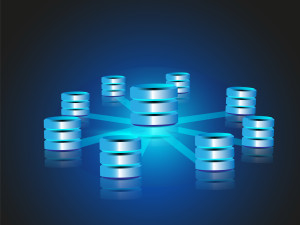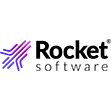
Agentic AI Spurs Data Stack Updates at Snowflake Summit

(optimarc/Shutterstock)
How do you move, store, access, and track data in the age of AI? It sounds like a simple question, but it has complex implications for the companies that are actually doing it. This challenge was front and center at the Snowflake Summit 25 conference this week, and led to announcements by Snowflake as well and the third-party vendors who play in its snow stack.
Snowflake made a number of announcements at its annual user conference. The big deliveries were Snowflake Intelligence, a new application that provides a conversational interface for business users and data professionals to ask natural language questions and get AI-powered answers, and Cortex AISQL, which allows users to create complex, multi-step AI workflows using the power of SQL. The company delivered a lot more, which we summarized here.
Snowflake also announced its acquisition of Crunchy Data, a provider of Postgres managed services. Postgres is having a moment in the agentic sun at the moment, as evidenced not only by Snowflake’s acquisition of Crunchy Data but also Databricks’ purchase of Neon. While the centralized data warehouse will continue to be the source of truth for AI workloads, there’s a host of other reasons to have a full-fledged relational database behind AI agents, which appears to be what’s driving these acquisitions.
In the meantime, the emergence of agentic AI is driving various other changes up and down the stack. For instance, it’s impacting data provisioning, which the process of figuring out which users (or agents0 have access to which data sets under what conditions. Immuta has been sailing these seas for a long time, and this week, it updated its software to work in more of a real-time manner, which is important for AI agents that are spun up and spun down in short periods of time.
“These capabilities represent a fundamental shift in how organizations think about data access,” Immuta CEO Matt Carroll said in a press release. “We’re moving from governance to data provisioning—from static rules to intelligent automation. Traditional models weren’t built for the volume and velocity of access demands created by AI. The organizations that win in this next era will be the ones that can provision data safely and in real time.”
Atlan used the Snowflake conference to launch a new product called Data Quality Studio. The new offering runs natively on Snowflake Data Metric Functions (DMFs) facility and allows users to bring their Atlan-defined data quality rules around variables like data completeness, bias thresholds, and regulatory constraints directly to the tables, views, and features in Snowflake offerings, including Cortex AI.
“GenAI breaks without trusted data,” Atlan Co-founder and CEO Prukalpa Sankar, said in a press release. “By running business-first quality checks inside Snowflake and surfacing trust signals everywhere, Atlan works with the Snowflake AI Data Cloud to create a real-time guardian of context and compliance. That’s how customers become truly AI-native—fast, safe, and audit-ready.”
Analytics tool provider Sigma announced an integration with Snowflake’s semantic layer that will enable its customers to use its spreadsheet-like interface to power queries of unstructured data using Snowflake Cortex AISQL. The company hailed the use of the semantic layer to simplify integration and ensure data consistency.
“Sigma’s integration with Snowflake Semantic Views isn’t just compatible–it’s truly native, built for flexibility, scale, and the next generation of analytics,” Sigma CEO Mike Palmer said in a press release. “By meeting the semantic layer where it belongs, we’re giving business teams instant access to governed metrics and logic without compromise.”
The Matillion team flew in from Ireland and the UK for the big launch of Maia, the ETL and data integration vendor’s latest foray into generative and agentic AI. Maia essentially is the head AI agent that will take human input regarding the data pipelines that customers want to create into their Snowflake data warehouse, and then pass those inputs down to a series of additional agents that will execute the data engineering tasks within the Matillion product.
“Data engineering is centered on repetitive work that is important, but often gritty and sometimes boring,” Matillion co-founder and CEO Matthew Scullion stated in a press release. “Imagine what could be achieved if the heavy-lifting of that gritty work was taken away so data engineers could focus instead on driving real business value and impact. That is exactly what Maia does – data engineering at the speed of thought.”
Data observability firm Monte Carlo used Snowflake Summit 25 to announce that it’s working with Snowflake to integrate its data observability technology within Cortex Agents. The integration work will give customers the confidence that their Cortex AI agents are getting high quality, reliable, and performant data.
“By addressing the critical need for consistent reliability across the entire data + AI stack, we’re enabling organizations to build confident, production-ready AI products, while maintaining full visibility into the health and performance of their data + AI estate,” Monte Carlo Co-founder and CTO Lior Gavish said in a press release.
Striim, a provider of streaming data solutions, launched two new governance tools at the show, including Sherlock AI and Sentinel AI. The Snowflake Cortex AI-powered agents are designed to help organizations detect, tag, and protect sensitive upstream data in transit, minimizing exposure risks, preventing compliance penalties, and safeguarding corporate reputation through continuous, near real-time monitoring.
“Sophisticated AI and analytics capabilities demand seamless data integration and sharing capabilities, with governance beginning at the point of sensitive data identification,” Alok Pareek, co-founder and EVP of engineering and products at Striim, stated in a press release. “The new Sherlock AI identifies blind spots by discovering sensitive data prior to data sharing or movement. Since data doesn’t stay in one place, Striim’s Sentinel AI agent complements Sherlock by protecting sensitive information in real time as it moves through enterprise data pipelines.”
RelationalAI is utilizing its relational graph technology to squeeze more actionable insight out of customer’s Snowflake-resident data. It’s doing this through a native app that provides “text-to-reasoner” capabilities, support for Snowflake semantic views, integrated prescriptive reasoning, and more support for graph algorithms and graph neural networks.
“These new capabilities open up new possibilities for what customers can do with intelligent apps in Snowflake–moving from reactive analytics to reasoning-powered decisions,” RelationalAI CEO Molham Aref said in a press release. “We’re proud to offer the most complete foundation for building semantics-aware, AI-native applications on top of enterprise data.”
ThoughtSpot is also hooking into Snowflake with its new Agentic Analytics Platform, which it unveiled at the show. The new offering is designed to make it simple for people of different skill levels build AI apps using Snowflake data and a variety of Snowflake elements, including Cortex AI, Snowpark, Streamlit, and other components.
“Our vision is to put the power of data directly into the hands of every user and help organizations get the most from their Snowflake investment,” Francois Lopitaux, ThoughtSpot’s senior VP of product management, stated in a press release.
Customer event data specialist RudderStack launched a new streaming integration with Snowflake at the show. The new integration combines RudderStack’s customer data collection and governance infrastructure with Snowflake’s Snowpipe Streaming technology.
“By leveraging Snowflake’s Snowpipe Streaming technology, RudderStack joins Snowflake in making data streaming more accessible,” RudderStack head of product Eric Dodds stated in a press release. “Our high-performance SDKs and robust governance tools make it easy to collect events across the customer journey and enforce governance before the data lands in Snowflake.”
DataOps provider Matia has developed a reputation on the back of its ETL, reverse ETL, and observability solutions. At Snowflake Summit 25, the company launched a new data catalog that utilizes metadata tags to track data lineage across Snowflake, dbt, and other environments. It’s the latest example that tool consolidation remains a customer priority.
“This launch reinforces Matia’s commitment to streamlining the modern data stack,” said Matia Co-founder and CEO Benjamin Segal said in a press release. “By embedding catalog functionality directly into its ETL, reverse ETL, and observability layers, Matia eliminates the need for disconnected tools and fragmented workflows.”
Related Items:
Snowflake Widens Analytics and AI Reach at Summit 25
Why Snowflake Bought Crunchy Data
AI Agents To Drive Scientific Discovery Within a Year, Altman Predicts









































